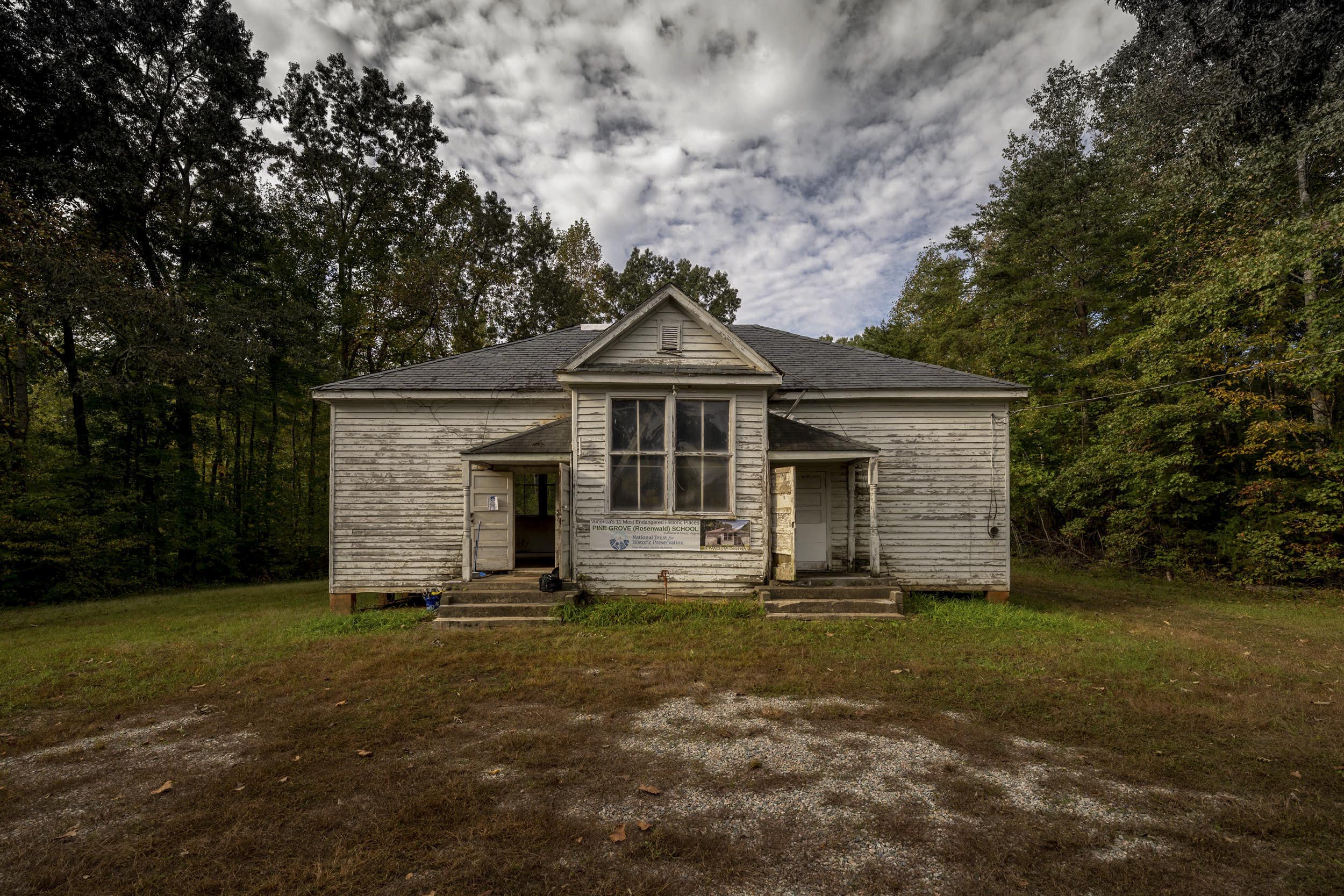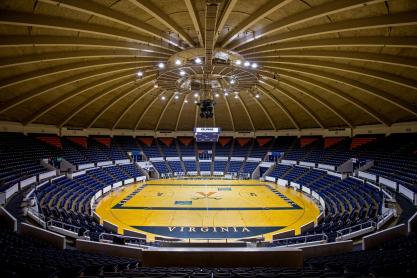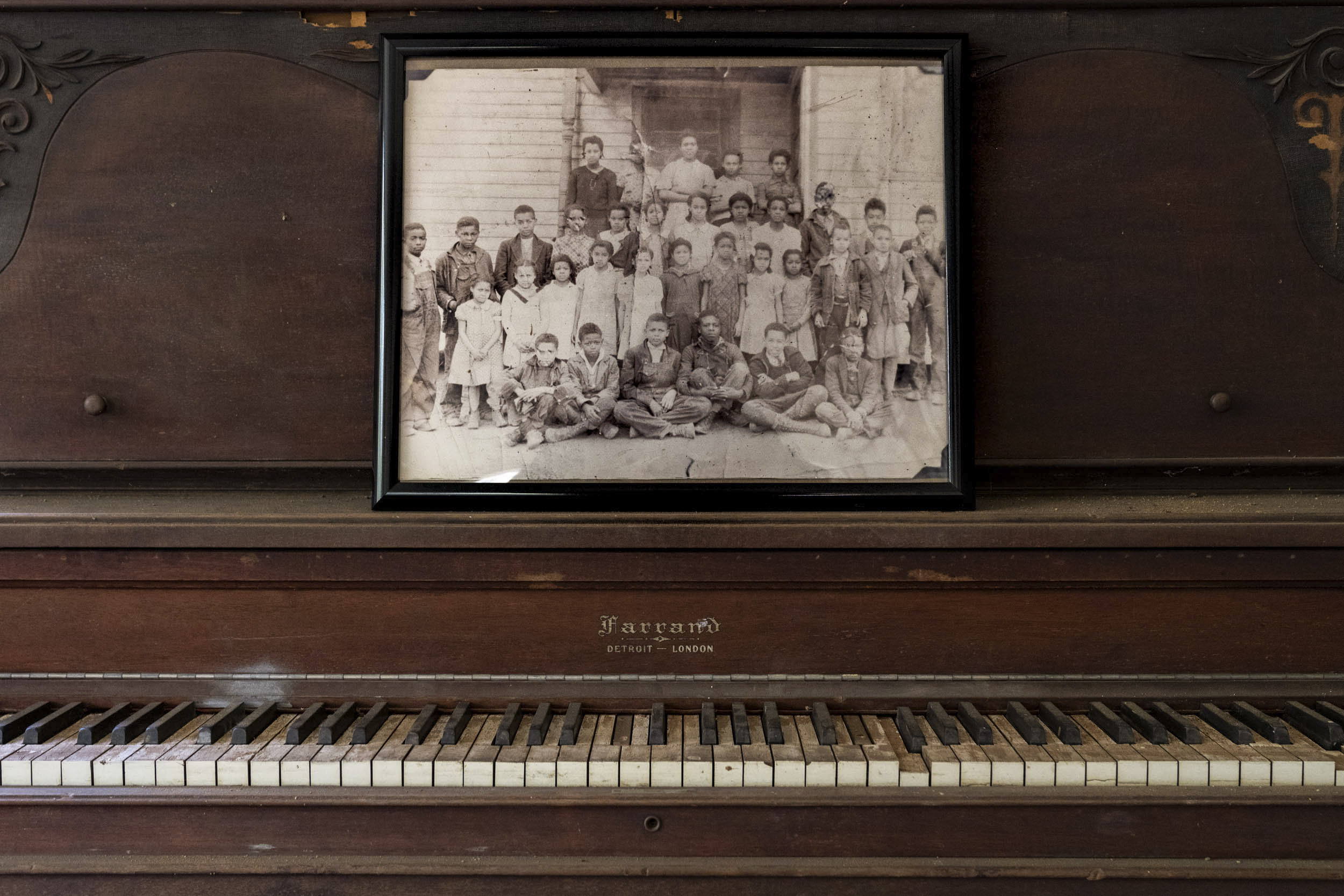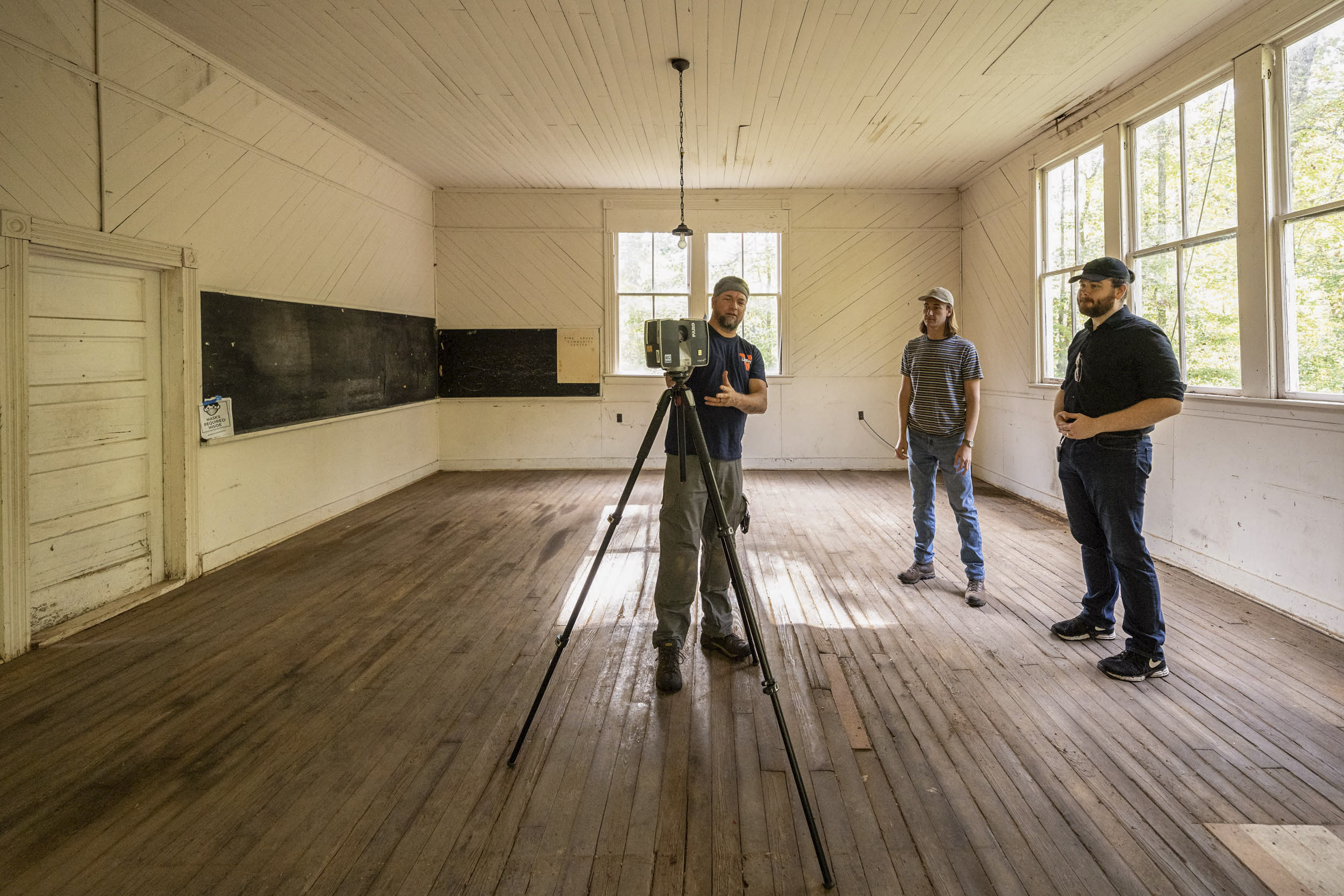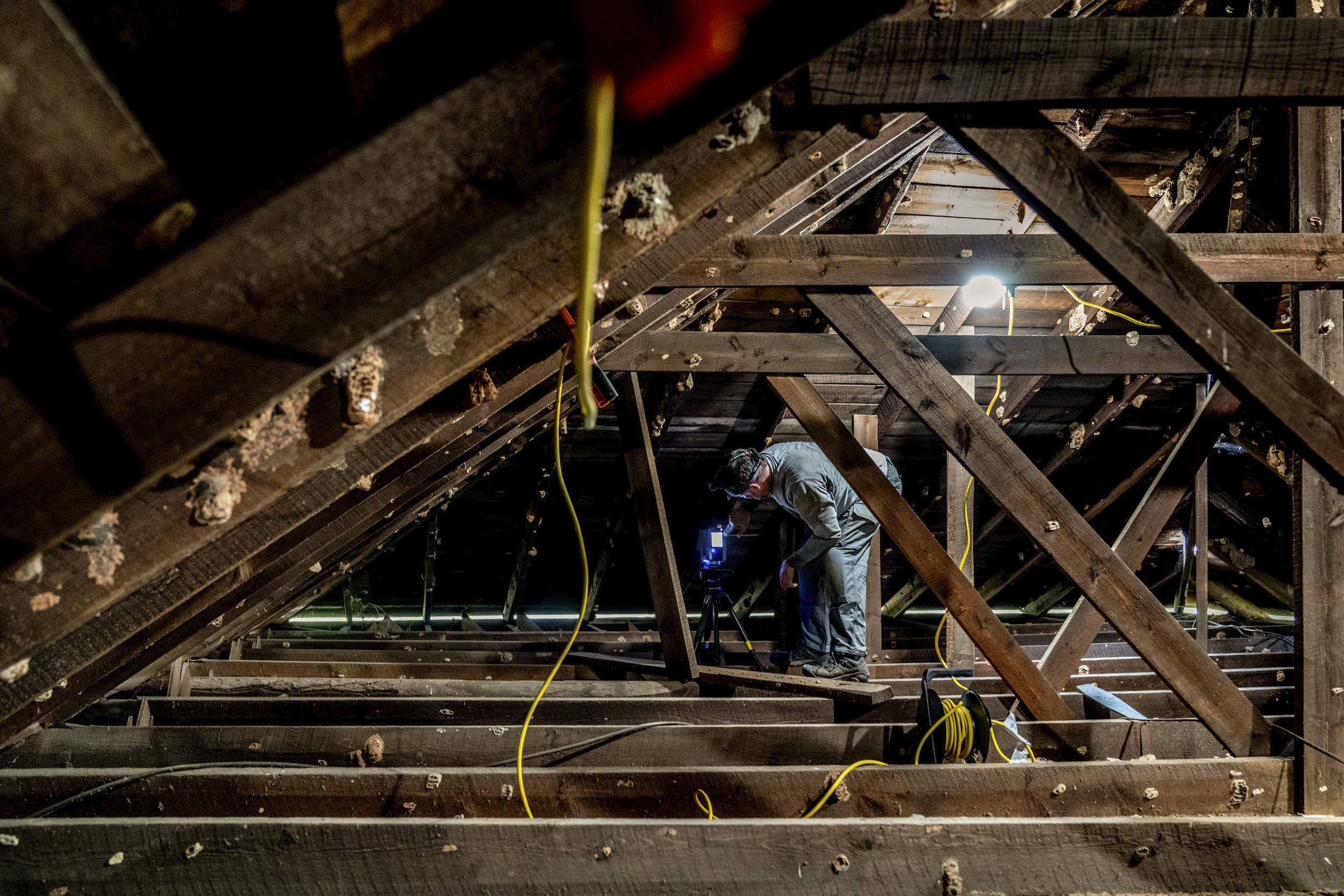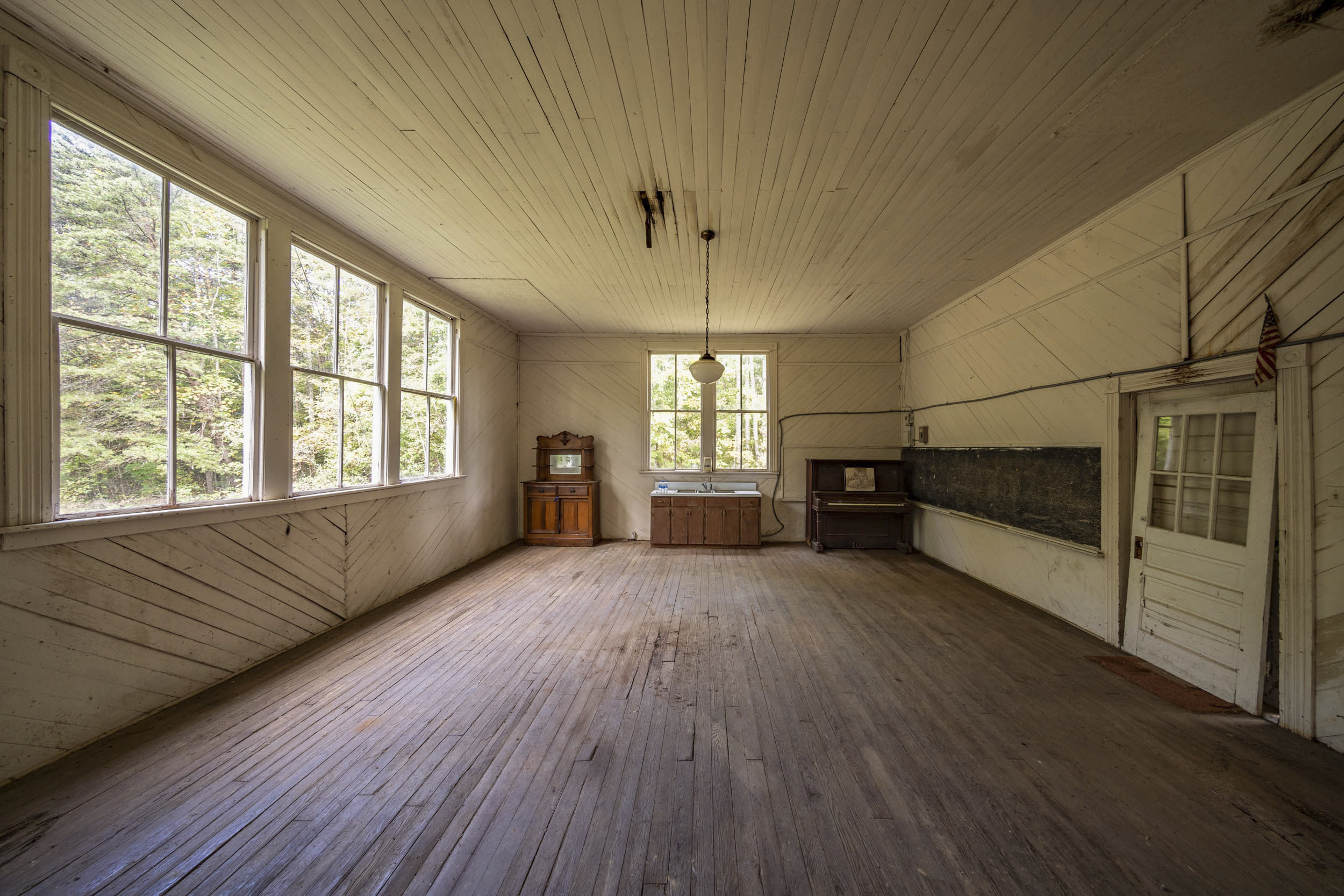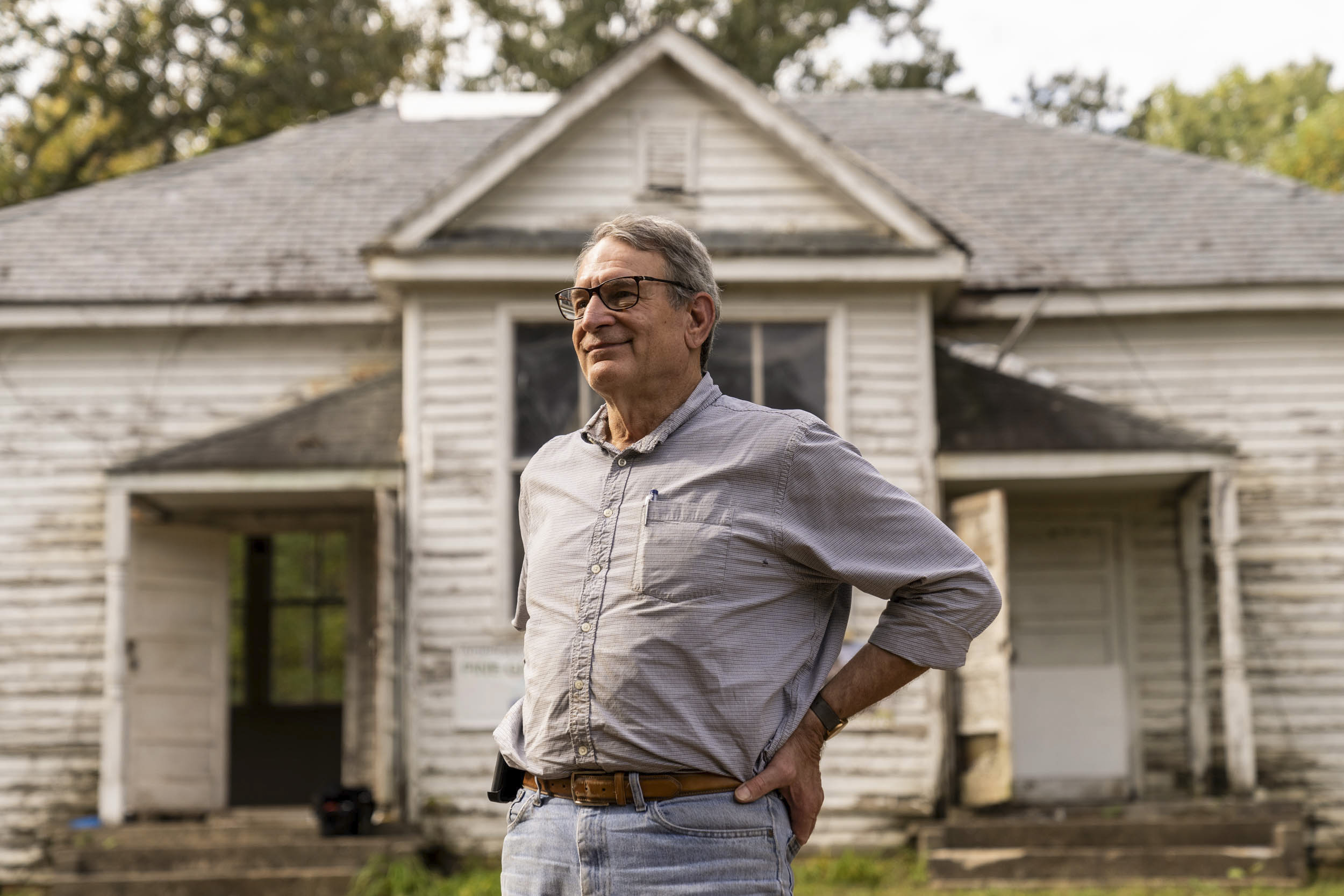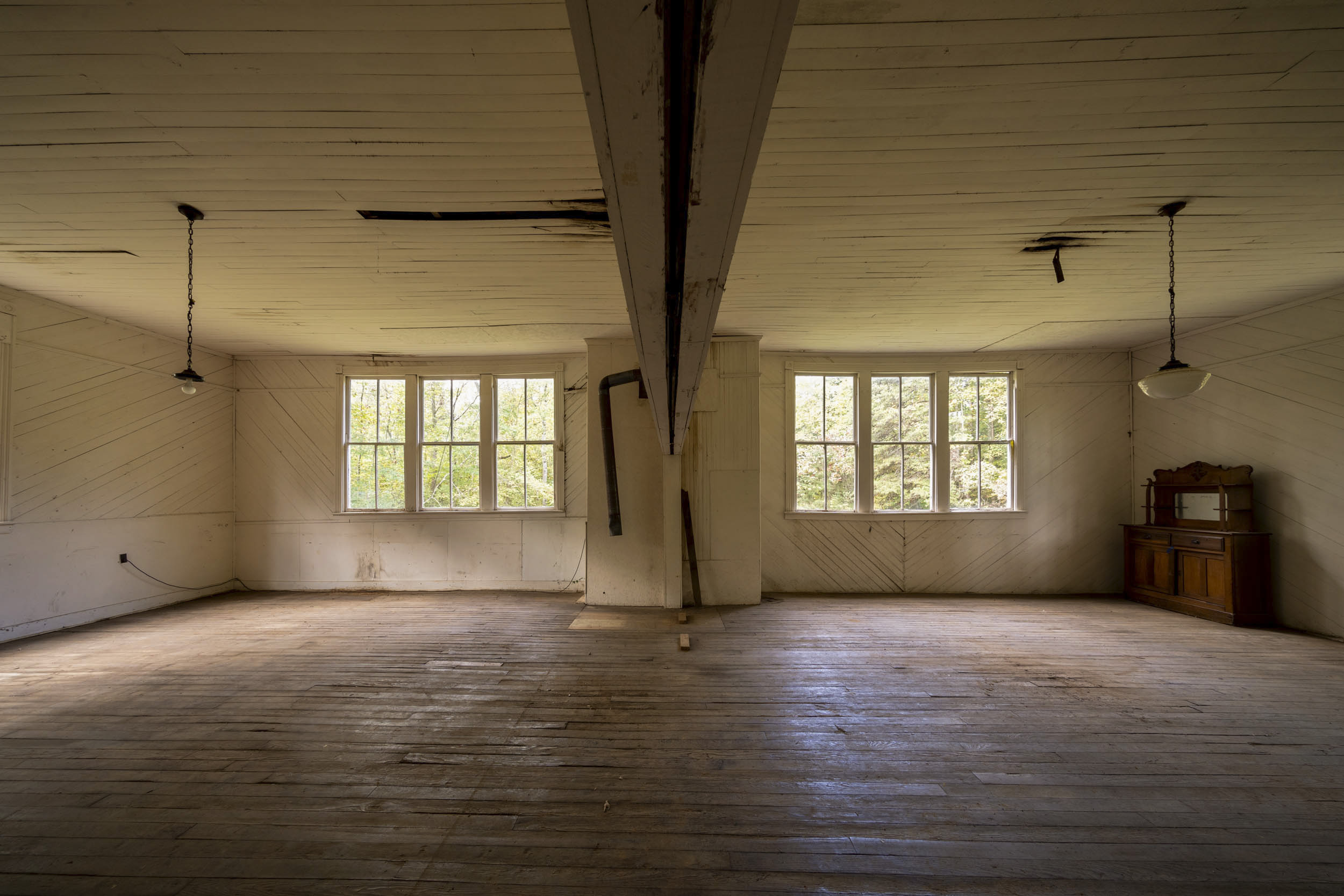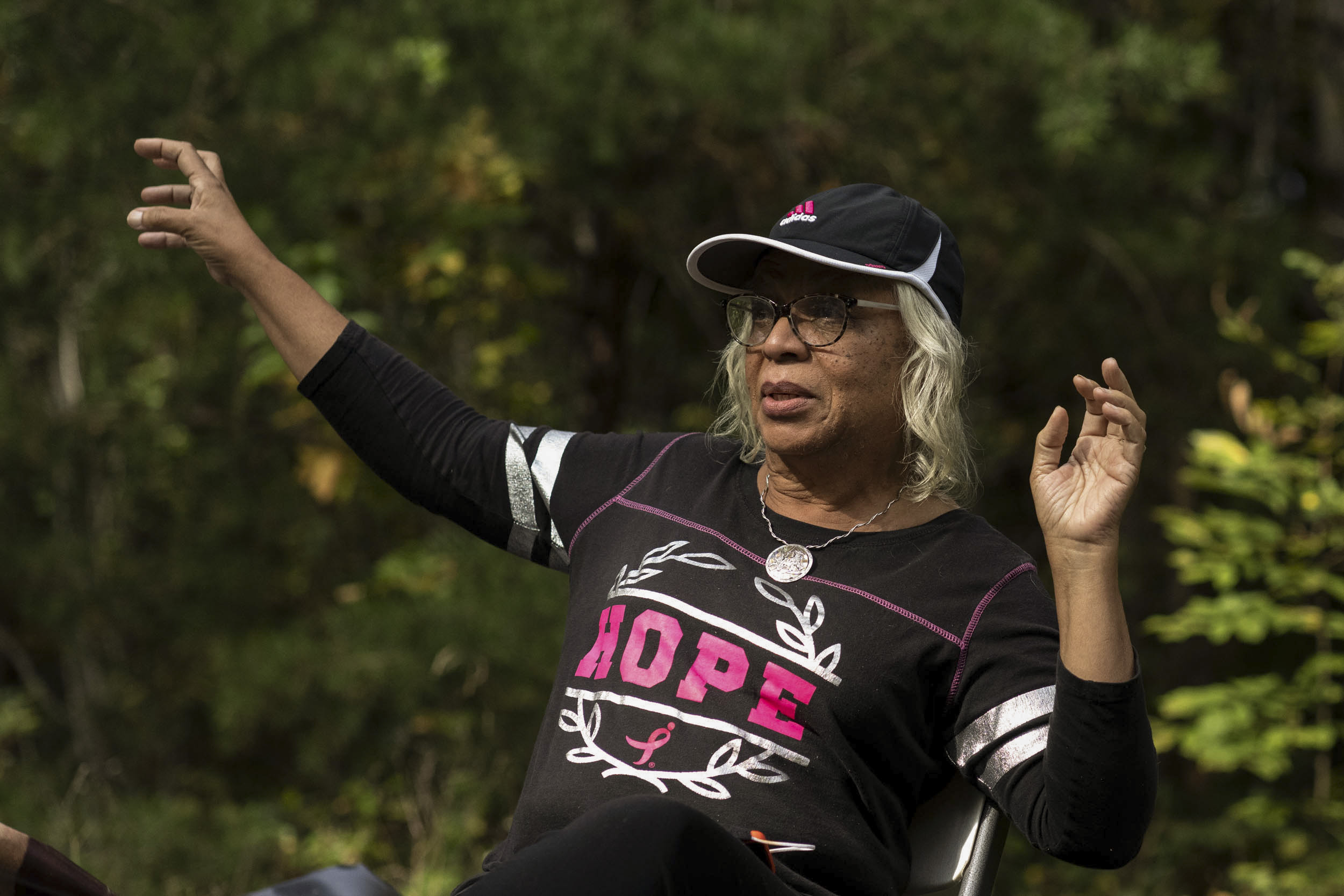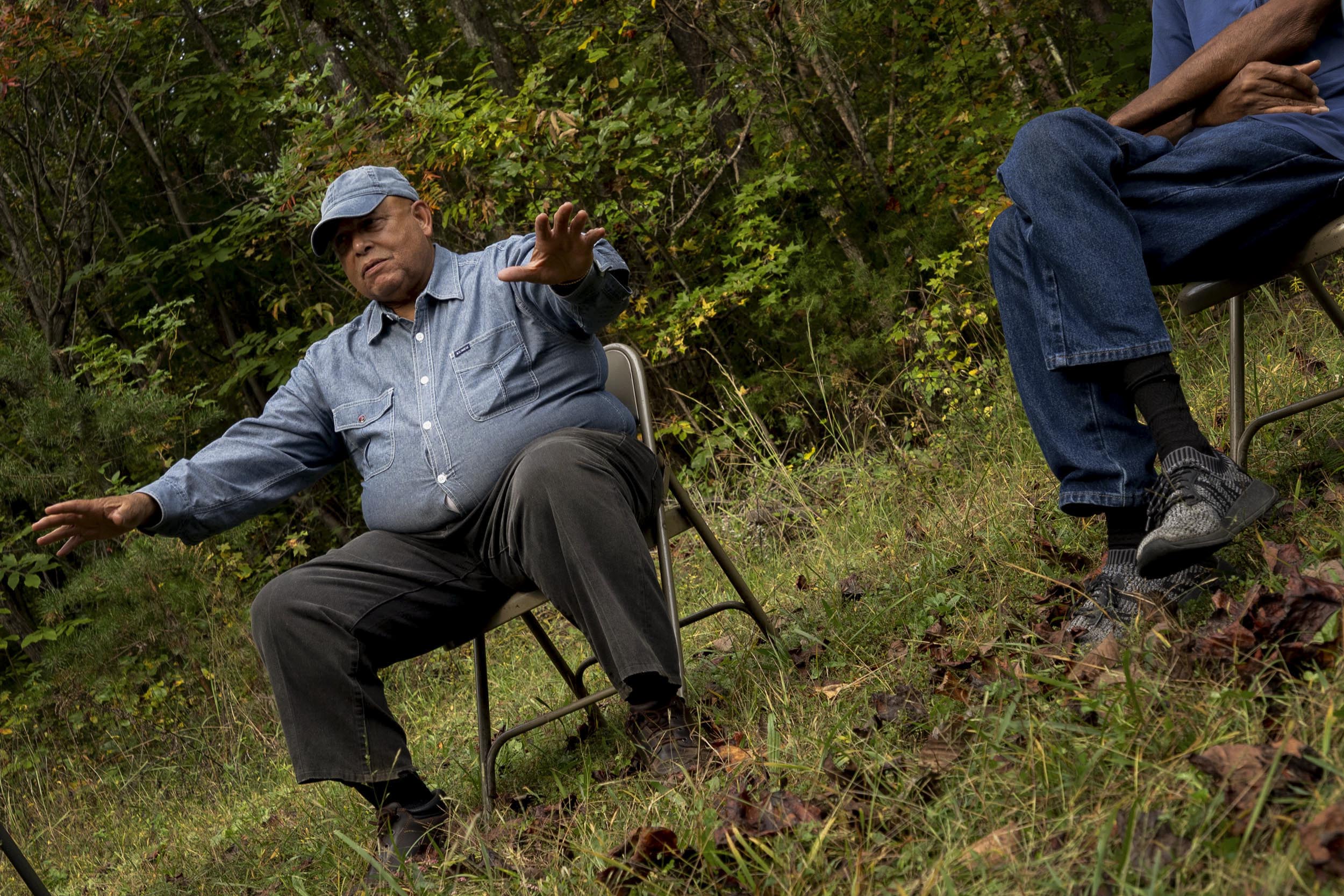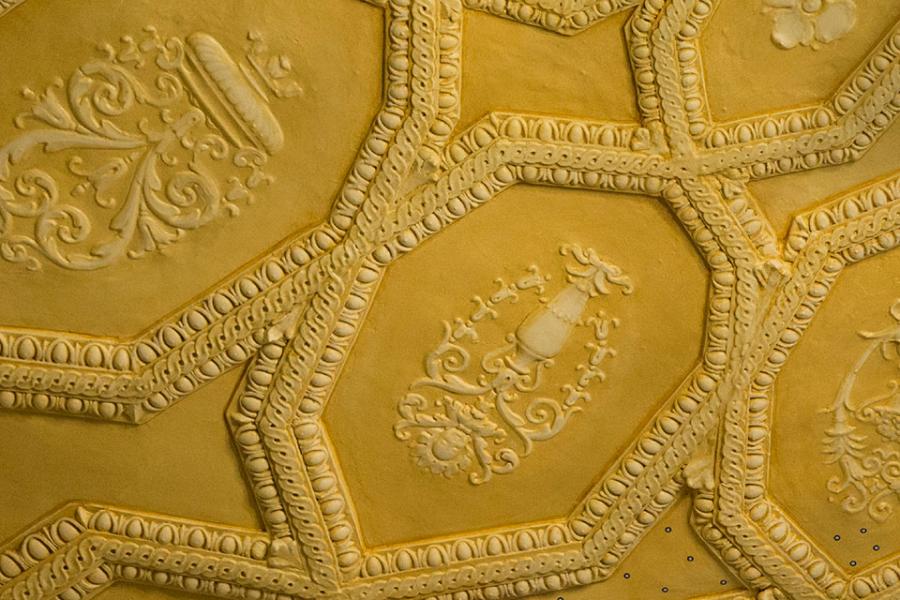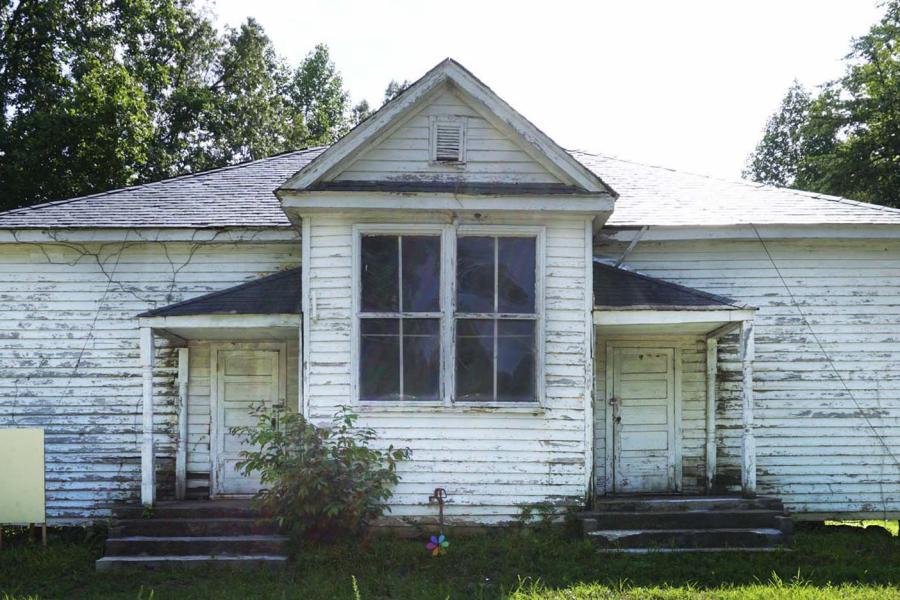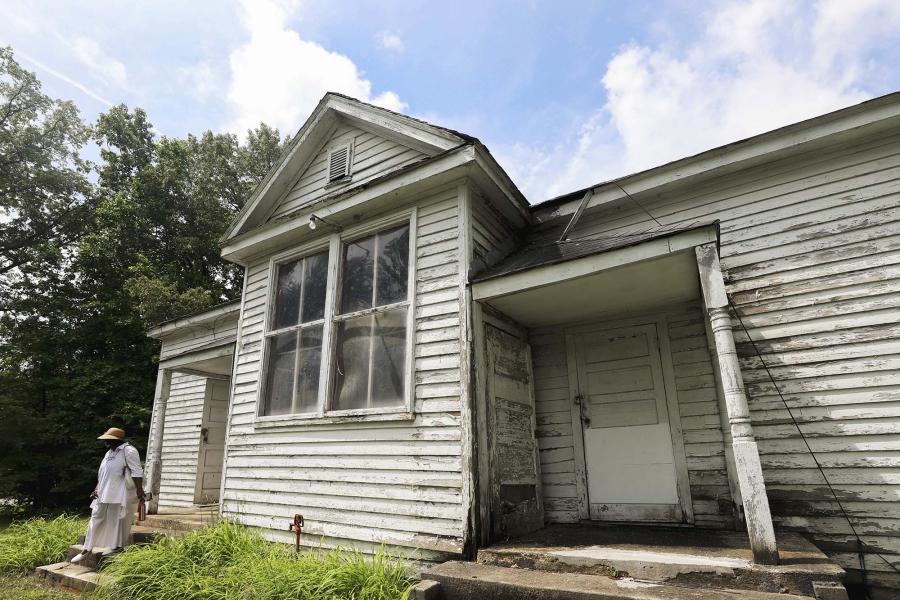“You can see a ballfield here, can’t you?” Michael Scales said as he waved his hand to indicate the entire grassy area in which he was seated. “Of course, that tree wasn’t there then,” he said, indicating a sapling growing near where the pitcher would have stood.
Scales, who had been a Spanish and history teacher in Richmond, was perched on a folding metal chair, talking to visitors in a chat circle at the Pine Grove School in Cumberland, a “Rosenwald school” that he attended from 1959 until its closing in 1964, helping explain what it was like to attended classes there. Scales joined fellow Pine Grove alumni Muriel Branch, Roosevelt Gregory and Lloyd James in detailing to several Cumberland County School System history teachers what the segregated school system was like for Black students.
In the early part of the last century, Rosenwald schools spread throughout the South, a vision of Booker T. Washington, who led the Tuskegee Institute, and Julius Rosenwald, a philanthropist who made his money from Sears, Roebuck and Co. Rosenwald fronted some money toward the schools, all built on a similar blueprint, but insisted that the local community contribute as well. The Pine Grove School was built in 1917 with floor plans from the Tuskegee Institute.
While the alumni talked, Lakshmi Fjord, a visiting scholar at the University of Virginia’s Department of Anthropology, took careful notes and posed questions. They were gathered in a circle in the back yard of the school, seated in folding metal chairs, surrounded by furniture and items from the building, cleared out so that UVA Architecture students could laser-scan the interior and exterior.
